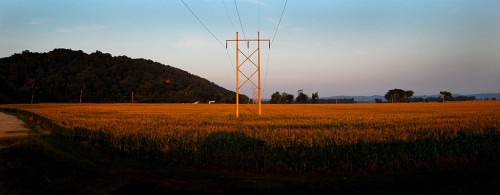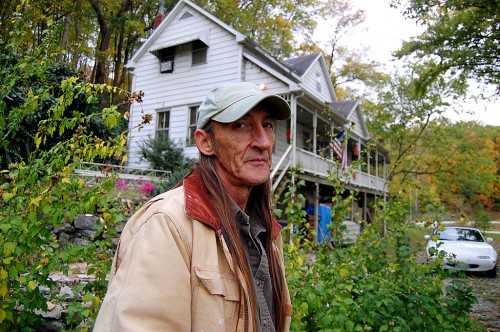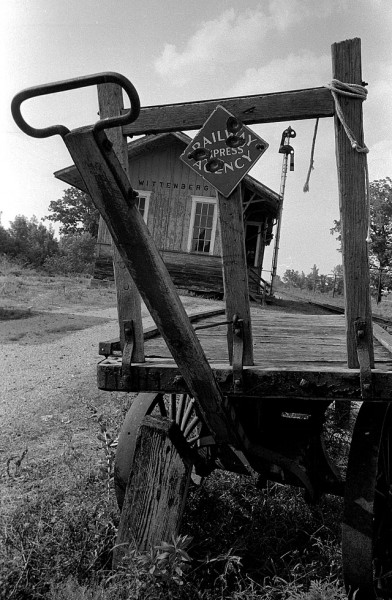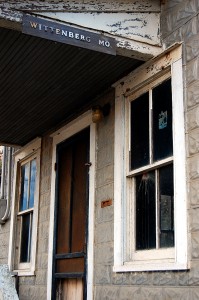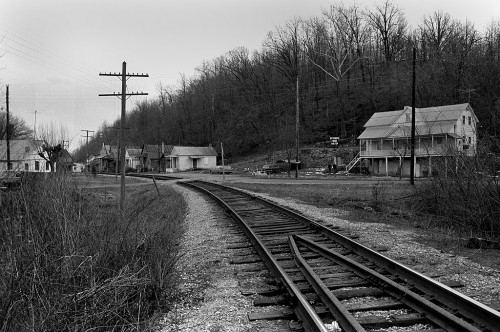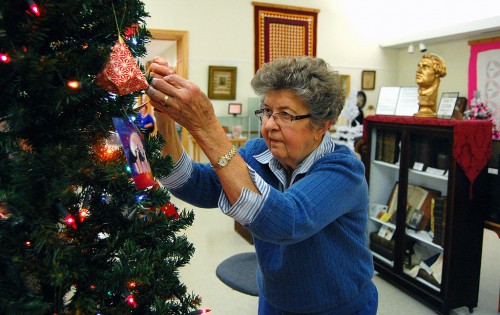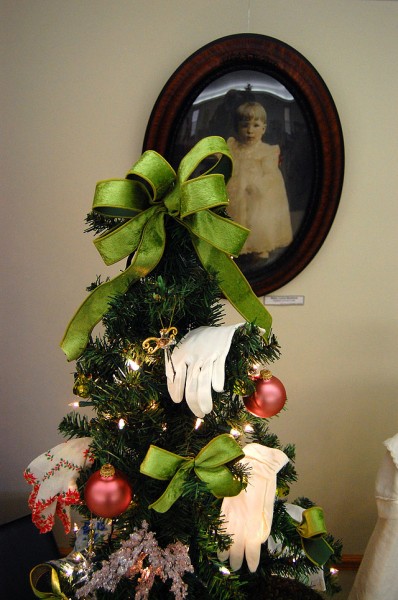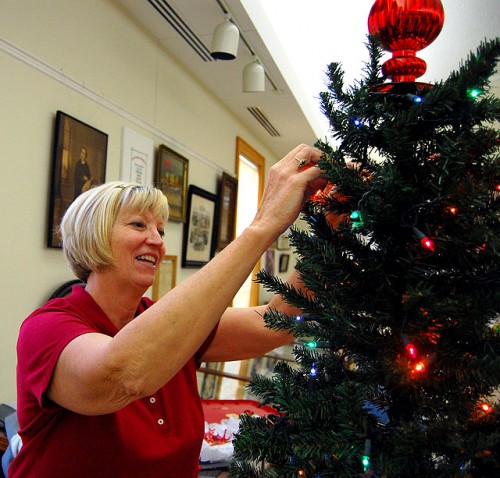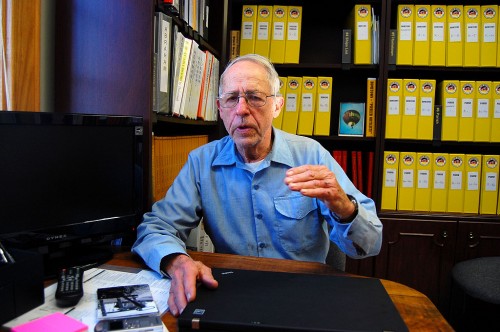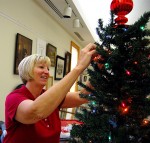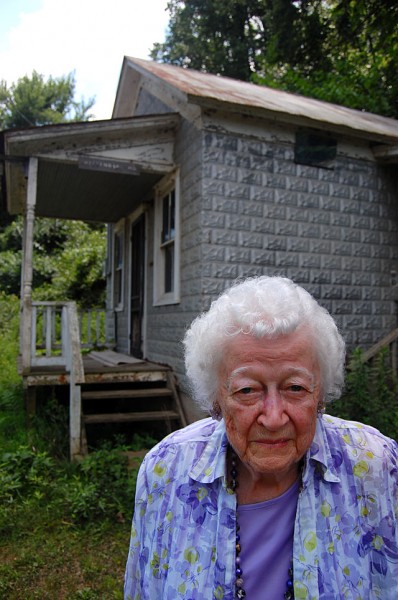 I was back up in Perry County today to photograph Viola “Mietz” Theiss, former Postmaster of the Wittenberg Post Office. Because I have pictures of the town before it washed away in the 1973 and 1993 floods, I’m working on a project with the Altenburg Lutheran Heritage Center and Museum to shoot current photos to match up with the ones I shot in the late 60s. At the very least, there will be an exhibit of the photos at the museum, and I’ve been invited to speak about how to do regional photography at a conference next year. We’re working hard to see if I can turn the images into a book, too.
I was back up in Perry County today to photograph Viola “Mietz” Theiss, former Postmaster of the Wittenberg Post Office. Because I have pictures of the town before it washed away in the 1973 and 1993 floods, I’m working on a project with the Altenburg Lutheran Heritage Center and Museum to shoot current photos to match up with the ones I shot in the late 60s. At the very least, there will be an exhibit of the photos at the museum, and I’ve been invited to speak about how to do regional photography at a conference next year. We’re working hard to see if I can turn the images into a book, too.
Mietz, and her daughter, Kathy Schoenherr, were a lot of fun. We drove out to Tower Rock, Wittenberg, her old homestead and the site of the train depot where she had to have northbound and southbound mail ready to meet the trains in the morning and the afternoon. We also spent some time at the old Post Office, one of only two buildings still standing in the village.
Fawns along the road
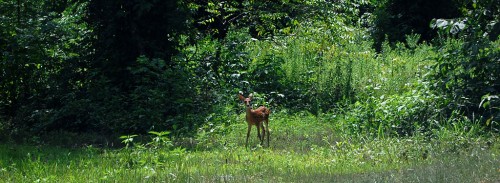 One of the high points of the day was when we rounded a curve and spotted two fawns, not much bigger than large dogs on the side of the road. I stopped the car immediately to keep from spooking them. They were more curious than afraid. They slowly approached us with their ears high in the air. I didn’t want to roll down the window, so I shot this through the windshield. They were a little far off to get a good shot. After about a minute, their mother came walking across the road. She was a little more cautious than the fawns, but she took plenty of time herding her charges off into the bushes. I rolled the car forward a few feet and the crunching gravel caused them to bolt away.
One of the high points of the day was when we rounded a curve and spotted two fawns, not much bigger than large dogs on the side of the road. I stopped the car immediately to keep from spooking them. They were more curious than afraid. They slowly approached us with their ears high in the air. I didn’t want to roll down the window, so I shot this through the windshield. They were a little far off to get a good shot. After about a minute, their mother came walking across the road. She was a little more cautious than the fawns, but she took plenty of time herding her charges off into the bushes. I rolled the car forward a few feet and the crunching gravel caused them to bolt away.
David Holley hopes to beat the odds
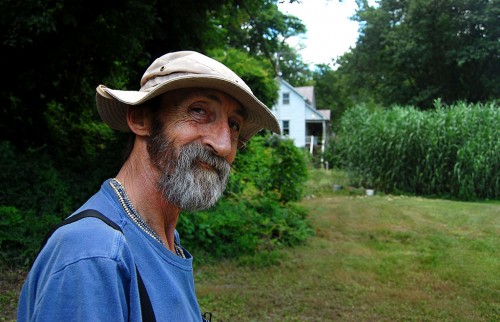 The other high point was when David Holley came walking by. He owns the Post Office and lives in the only other building in Wittenberg. He’s the fellow featured in my video about the last train robbery in Missouri. Interestingly enough, Mietz said her husband told stories about seeing the aftermath of the shootout that ended the caper.
The other high point was when David Holley came walking by. He owns the Post Office and lives in the only other building in Wittenberg. He’s the fellow featured in my video about the last train robbery in Missouri. Interestingly enough, Mietz said her husband told stories about seeing the aftermath of the shootout that ended the caper.
Townsfolk told me that David had been having a tough time lately, so I was really happy to see him. “I’m on my third round of chemo,” he said. “I’m hoping I’m in the 60% that makes it, but I haven’t had a whole lot of luck in my life,” he added, matter of factly.”
Same old story-teller
He’s lost a lot of weight and his hair has turned greyer, but he’s still the same old story-teller with the same old twinkle in his eye. When I asked him how high the water had gotten in his house, he said that it reached about three feet in the basement during one stretch: high enough that they were cut off from the main road and had to use a canoe to get home.
Then, he launched into a typical David story about the Flood of 1993 and having to put his toddler daughter in the canoe in the middle of the night to pick up his wife when she got off work. The water was high enough to to just about reach the ceiling in the post office, he said, putting the canoe into the treetops. “I’d give my daughter a lantern to light my way through the trees, and we’d start out fine. Then, about halfway there, she’d think she was a coon hunter or something and start shining the light up into the trees, into the air and everywhere but where we were supposed to be going. She thought it was great fun to have me run into a tree.”
It’s hot. How hot is it?
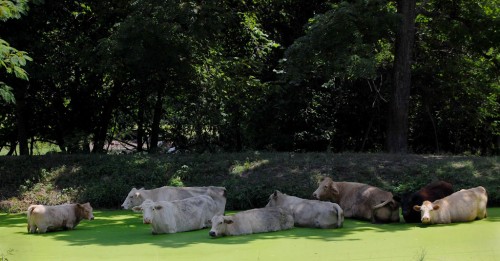 It’s hot enough that I thought about joining these cows in an algae-covered pond on our way out of Wittenberg. This picture posed some interesting technical challenges. The cows – no fools – were in deep shade. The bulk of the pond was in bright sunlight. I like cows better than algae, so I cheated the exposure toward the cows, which caused me to lose the bright green algae in the foreground.
It’s hot enough that I thought about joining these cows in an algae-covered pond on our way out of Wittenberg. This picture posed some interesting technical challenges. The cows – no fools – were in deep shade. The bulk of the pond was in bright sunlight. I like cows better than algae, so I cheated the exposure toward the cows, which caused me to lose the bright green algae in the foreground.
The head index has been in the 105-108 degree range. I come home from shooting with my shirt so wet you can wring water out of it.
I went over to Wife Lila’s brother’s house the other night for dinner with him, Dee and Wyatt. John offered me an ice-cold beer and I had to turn him down. “I’m so thirsty that you’d have to get me a designated driver to get me home. If I stick to ice tea, the worst thing that could happen is that I’d get arrested for indecent exposure if I have to stop on the side of the road.”
It was a good choice. I emptied three giant glasses of tea and sloshed all the way home.

